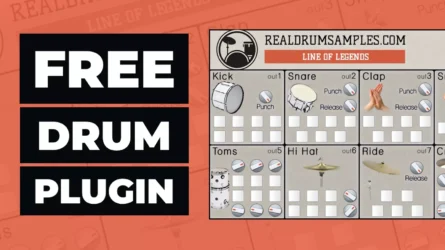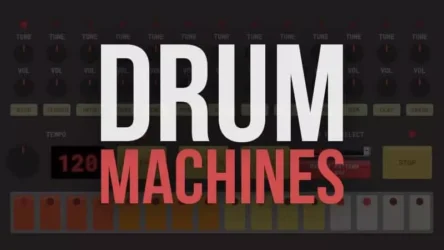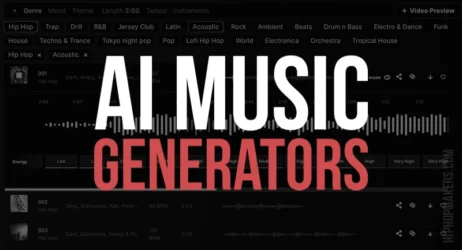This guide will answer what is harmony in music. Learn the different types of harmonies, view harmony examples, and learn how to create them.
What Is Harmony In Music?
Harmony is the relationship between notes or pitches that make up a musical composition. When two or more notes are played simultaneously, they must sound in agreement to not be out of tune. When a choir sings together, their combined voices work together to produce harmony.
- What is Harmony In Music
- Example of Harmony Music
- Types of Harmony
- Why is Harmony Important in Music
- How Do You Create Harmony
- Harmony vs Melody
- What is Harmony Used For
- Is a Chord a Harmony or Melody
- How Do You Describe Harmony
What is Harmony In Music?
Harmony is one of the most critical elements of music. When combined with other elements, it makes sure what the audience listens to is pleasing to the ear.
Harmony in music is combined with other factors, such as melody, and expressed through different notes and chords. In simpler terms, harmony occurs when two or more notes are played simultaneously in any creative musical artifact.
Harmony is that one element that usually confuses music enthusiasts and creators alike. In music, all elements are arranged systematically, which is vital to creating a sound piece that is complete in coordination with other elements.
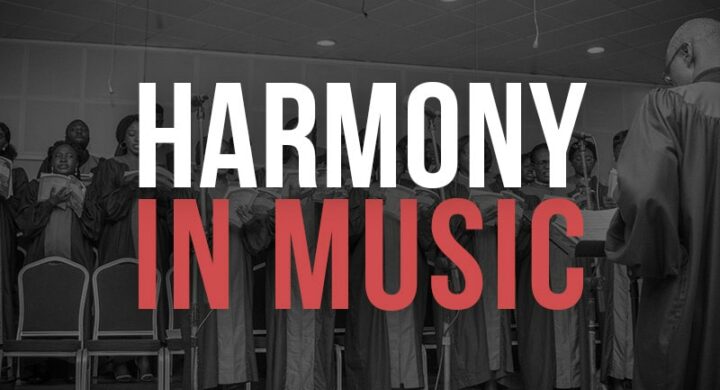
We can plainly define harmony as an arrangement of pitches in a chord when it comes to harmony. Not only within an individual chord, but harmony also occurs throughout the chord progression in any piece of music.
Therefore, when two or more notes are played simultaneously, it creates what we know as harmony.
Harmony is central to all musical compositions from R&B, hip hop, pop, folk, and so on. It is represented by Roman numerals that help in understanding the underlying structure of a musical piece better.
Some also call it music’s vertical dimension as it is played in correspondence with melody and with the help of chords simultaneously.
We find out that harmony came into existence as a result of experimentation with melody. In melody, notes are played in a particular order, one after the other, whereas, in harmony, two or more notes are played simultaneously. That is how it enriches a piece of music in its entirety.
It may not be straightforward at first, but once you dig into the theory of music and start making music, it is easier to identify harmonic sounds from other elements and work them out accordingly. Let us look at an example of harmony so that it is easier to grasp the concept.
Related: What is a Melody in Music
What is An Example of Harmony Music?
Just like melodies, harmonies are based on the arrangement of pitches. It comes into existence when individual notes are grouped together on instruments to create a harmonious sound effect. Many great songs have made their mark in the history of music just because their harmony was incredible.
From vocals to instruments like a piano, some of the greatest harmonies that musicians and audiences alike are fond of include The Beatles’ Don’t Let Me Down, Mumford and Sons I Will Wait, Queen’s Bohemian Rhapsody, the Beach Boys I Get Around.
All these musical masterpieces flaunt their popularity because of the impeccable blend of vocals and instruments they created, rendering the music world in awe of their genius forever.
What are the Different Types of Harmony?
While there are many types of harmony, the following are the most important and popular forms that are typically used:
1. Diatonic Harmony
Diatonic Harmony is one of the most ancient forms of harmony that dates back to the ancient Greek and Renaissance instrumentals. Diatonic harmony creates music in which one master scale is the turning point for all the notes and chords. Diatonic harmony is created through notes that are related to a specific key.
2. Non-diatonic Harmony
Non-diatonic Harmony As for non-diatonic harmony, the notes in this type of harmony do not go back to the same master scale. Instead, they take chords and notes from different scales and are most commonly employed in jazz music since the pattern of harmony is different from other music genres.
3. Atonal Harmony
Atonal Harmony Contrary to diatonic or non-diatonic harmony, atonal harmony refers to a form that does not consist of a tonal center. It comes without a minor or major scale or an identifiable root. As for its use in music, atonal harmony is widely used in classical music and Jazz.
Why is Harmony Important in Music?
Harmony is integral to any piece of music, specifically in today’s musical paradigm. Not only does it sound good to listen to, but it also enriches the piece of music by creating an emotional response within the listeners.
Any good piece of music with well-structured harmony helps listeners connect with the entire song and instill emotions that the song aims to instill.
As much as other elements are integral to creating any masterpiece, without harmony, it can go wrong in so many ways. After all, hitting the right note at the right time is what makes a piece of music exemplary.
How Do You Create Harmony?
In order to create harmony, musicians, along with their instruments, create a triad of notes that are played together, creating a harmonious effect. For example, let’s say that a flutist, a violinist, and a trombonist wish to create harmony.
What they would do together is arrange a set of notes each from their respective instrument and play it together, creating a triad. This is known as playing a chord.
What is the Difference Between Harmony & Melody?
This is one of the most confusing aspects of elements that is crucial to music. We know that melody is created by combining pitch and rhythm, and it is a series of individual notes sung by the singer along the lines.
On the other hand, harmony is not played separately like melody, and it often accompanies melody and is played through a group of notes.
A melody can be played on its own in the form of individual notes sung by the singer along with the notes.
Harmony occurs when two or more similar notes are incorporated with the melody, creating a more pleasant effect on the ears.
We may say that harmony is an extended form of melody created by combining notes rather than individually.
What is Harmony Used For?
Harmony is used for creating depth and color in a melody by adding extra notes to the composition. Although melody can be and is used on its own in many musical pieces, harmony gives resonance to melody and makes a song richer in terms of depth and emotions.
Creating harmony is a systematic process, just like the melody. It would not be wrong to say that music is also a science with its do’s and don’ts.
Is a Chord a Harmony or Melody?
A melody is created by combining pitch and rhythm, made up of single notes that sync with the song’s lyrics. Every song has a melody formed by consecutive notes, and, in the theory of music, it is known as the horizontal element.
A melody serves to connect the lyrics and notes, making it easy for the listener to perceive the link between notes and lyrics.
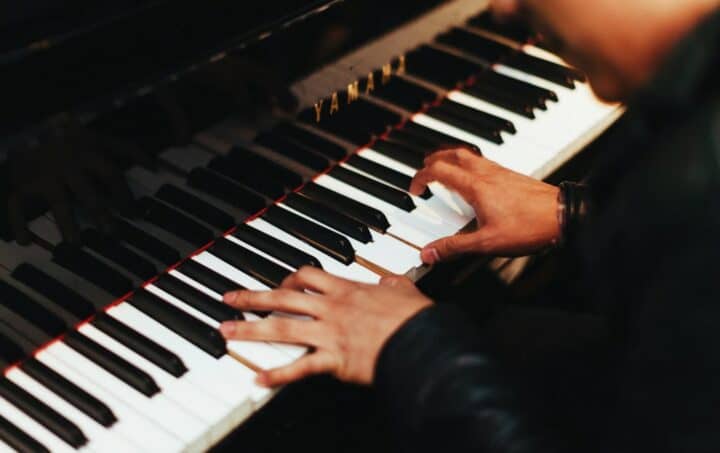
On the other hand, harmony is the vertical element in music that refers to more than two notes being played simultaneously. Melody and harmony are pretty similar yet have their distinctive features and functions within a song.
As for chords, it is a subset of harmony as every chord consists of notes that are played simultaneously to bring harmony. Chords, when combined, make harmony deliberately organized throughout the song.
Each component of a song comprises all these elements and has its own respective functions.
Be it a chord turned into harmony or melody combined with harmony, they all play a vital role in composing and structuring a piece of music that sounds good to the ear, stays memorable, and proves to be a creation of creativity and genius.
How Do You Describe Harmony in Music?
The word harmony is derived from a Greek word meaning “a concord of sounds.” In music, this refers to the relationship between two or more notes, chords, or melodies that are pleasing to the ear.
Harmony is integral to music because it makes the sound more pleasant and adds depth. One way to describe it is that harmony offers a balance of sounds.
Though it can be hard to define what harmony actually is, most people would agree that it’s an arrangement of two or more sounds that complement each other.
Another way to describe this is “chords,” where notes are played together at the same time. The chords are usually provided by one instrument or voice, but they can also come from several different instruments played at once.
The option of chords provides harmonic variety, which in turn offers the listener more enjoyment because they can anticipate what will happen next in the progression of chords.
Summary of Harmony
Harmony refers to the relationship between musical instruments or voices playing in sync and tuning together. When these elements work well with each other, they produce a pleasing result. If any element does not fit into place, then the whole becomes unbalanced and unpleasant sounding.
In understanding how harmony works in music, we can appreciate the beautiful sounds that make our favorite songs so memorable.
This term ‘harmony’ refers to the simultaneous sounding of more than one note, creating depth and richness in a composition. Using pitched instruments, musicians can strike multiple notes at once to create these harmonious effects.
Let’s take a look at classical music, a genre known for its composed music full of complex harmonies. It often utilizes consonant chords, which are a group of notes that sound pleasing to the ear.
A perfect example is the C major triad – a consonant chord that’s frequently used in a major key. However, this doesn’t mean that dissonant chords, which might sound less stable or even jarring, don’t have their place. Quite the contrary, composers often use dissonant chords to create tension or add color to the melody line.
In tonal harmony, which is common in tonal music like classical or pop, the harmony typically centers around a single note or ‘home’ pitch. In this system, chords fall into certain sequences, known as chord progressions.
The specific order and the type of chords used can significantly affect how the music feels. For example, in a major or minor key, the music may start with a consonant chord, move to a dissonant chord, then resolve to a consonant chord again, providing a sense of journey and return.
Understanding these harmonic relationships gives us a peek into the world of music theory. Predominant chords, such as a diminished chord, can add interesting twists to chord progressions.
This theory helps us understand why a piece of music can make us feel a certain way. In pop music or popular music, the simplicity of the chord progression can help amplify the melody and rhythm, creating catchy tunes that are hard to forget.
In conclusion, music harmony takes many forms, from consonant harmonies that provide a sense of comfort and stability to dissonant harmony that can evoke feelings of tension or unrest.
Whether we are listening to classical music or today’s popular hits, harmony is the unseen glue that holds the music together, creating an intriguing interplay between melody, rhythm, and chords. It’s the subtle magic that makes music come alive in our hearts and minds.
The next time you listen to a song, try to notice how harmony is working behind the scenes. You might find yourself appreciating the song in a whole new way.
I hope we successfully answered what is harmony in music.

